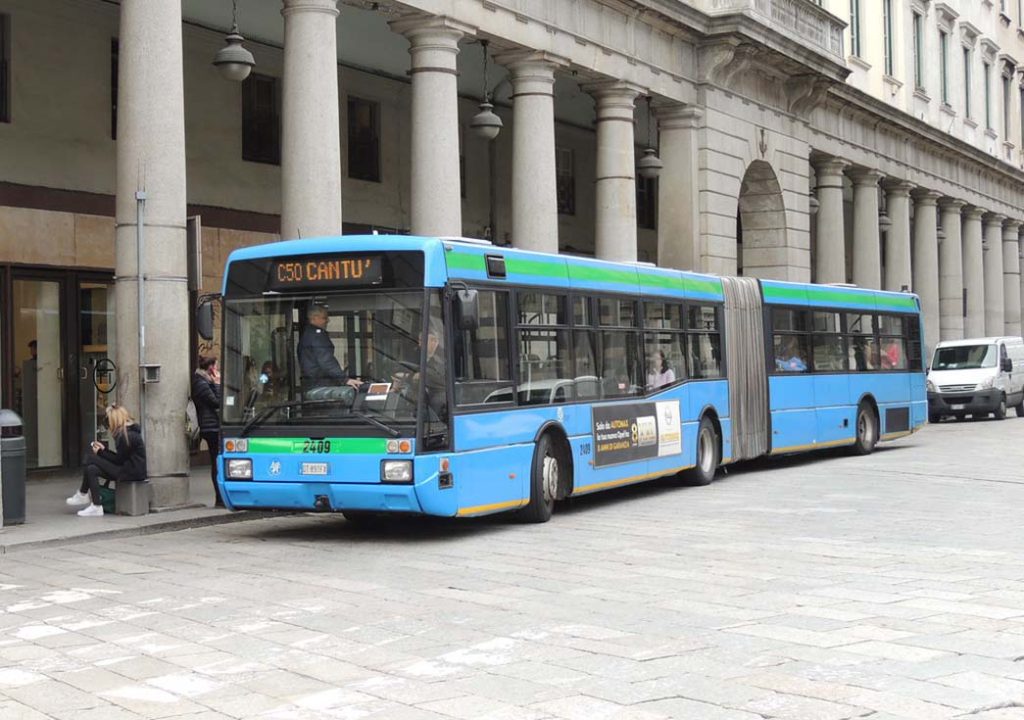When I arrived in Catanzaro, I was immediately struck by the city’s charm. Nestled between the Ionian and Tyrrhenian seas in the Calabria region of southern Italy, Catanzaro might not be as bustling or well-known as some other Italian cities, but that only adds to its appeal. With its picturesque views, old town streets, and the surrounding natural beauty, it’s the kind of place where every corner seems to hold a hidden gem.
One of the things I quickly realized was how crucial it was to figure out how to get around, especially since I wasn’t planning on renting a car. Navigating a city on foot can be fun, but when you want to venture beyond the main areas, it helps to have reliable public transportation at your disposal. So, I dove into the local bus system and other public transport options, and here’s how it went.
1. First Impressions of Catanzaro’s Public Transportation
Before diving into the details of the public transportation network, I need to share what I first noticed about Catanzaro. The city is divided into two distinct parts: the lower town (Catanzaro Lido), where the beaches are, and the upper town (Catanzaro Centro), which is where most of the historical sites and main attractions are located. The difference in elevation between the two parts means that getting from one to the other can feel like a mini mountain-climbing expedition.
One of the best ways to handle this is by using public buses. The town is not large, but it’s not small either, and walking everywhere can be exhausting—especially when you have to deal with the steep hills. The buses in Catanzaro are an essential part of daily life, and they can get you from the historical center to the coastal areas with relative ease.
2. The Local Bus System: A Lifeline in Catanzaro
Catanzaro’s bus network is operated by a company called “ATAM” (Azienda Trasporti Aziendale del Comune di Catanzaro), which handles the city’s public transportation needs. The first thing I noticed when looking into the bus routes was how well-connected the city is. Even though I was staying near the central Piazza Matteotti, I found that there were several bus lines running directly to various parts of the city, including the beach area and the more remote neighborhoods up in the hills.
Buying Tickets: Simple but Essential
Before hopping on any bus, it’s important to know how to buy tickets. Tickets for ATAM buses are relatively inexpensive, but they must be purchased in advance. There are a couple of ways to buy them: at tobacco shops (called “tabacchi”) around the city, at authorized vendors, or via the ATAM website and app. I found that the easiest way was to buy tickets from the small kiosk next to the bus terminal in Piazza Mazzini.

For a single ride, tickets cost around €1.30, and if you’re planning on staying for a while, you might want to consider a day pass, which gives you unlimited rides for around €4. The ticket doesn’t need to be validated when you board the bus, which is a little different from some other cities, but keep it with you as ticket inspectors sometimes board the buses and ask to see them.
Catching a Bus: Finding Your Route
Once I had my tickets, I spent a little time studying the bus routes. Most of the main lines pass through the central area, but as you move away from the heart of Catanzaro, the buses become less frequent. The buses in the central areas run fairly regularly, about every 10 to 20 minutes, depending on the time of day, but in more remote parts of the city, the wait time can stretch to 40 minutes or longer.
One route that became my favorite was Linea 1, which connects Catanzaro Lido to Catanzaro Centro. The bus rides through some lovely countryside, offering scenic views of the mountains and the sea. It’s a great option if you’re staying in Catanzaro Lido and want to explore the upper city, where the historic sights like the Cathedral of Catanzaro and the Aragonese Castle are located.
Bus Timetables and Planning Ahead
While the timetables for buses are fairly regular, I quickly learned that they’re not always followed to the letter. Italian bus systems, in general, aren’t exactly known for punctuality, and Catanzaro is no exception. Still, the buses are reliable enough, and with a little patience, it’s possible to get around.
I downloaded the ATAM app, which helped me get a real-time view of bus schedules and track whether a bus was delayed. It was also a great resource for finding which bus would take me to the nearest attractions. The app provides both a map of the routes and a timetable, and I relied on it heavily during my stay.
3. The Funicular: A Scenic and Efficient Ride
If you’re trying to go from Catanzaro Lido to Catanzaro Centro, there’s one other transport option that should not be overlooked—the funicular. I wasn’t entirely sure what to expect when I first saw the cable cars making their way up the steep hills, but I quickly became a fan of the funicular for its unique perspective of the city. It’s a smooth, relatively quick way to get between the two parts of Catanzaro without having to deal with the hills yourself.
The funicular station is located just near the waterfront in Lido, and the ride offers an incredible view of the Ionian Sea on one side and the sprawling city on the other. The cost is the same as the buses, and the service runs fairly frequently, though not quite as often as the buses. It’s definitely a fun way to get a bird’s eye view of the city—both literally and figuratively—and it only takes about 5 minutes to go from bottom to top.
4. Exploring Catanzaro Lido: Beach Days and Easy Access
When it comes to relaxing and exploring, Catanzaro Lido offers plenty to do, and the public transport options make it easy to navigate the coastal part of the city. The bus service between the upper city and the beach area is frequent, which makes it incredibly convenient for beachgoers who want to move between the two locations. The beach itself is peaceful and not overrun with tourists, which was perfect for someone like me looking to take it easy.
The best part? The bus stops are located near the main beach entrances, so catching a bus from the beach to the city center is quick and easy. It also helps that the buses are air-conditioned, which is a blessing during the hot summer months. For anyone planning to spend the day at the beach and then head back to the city for dinner or sightseeing, this public transport option is ideal.
5. Traveling Beyond Catanzaro: Regional Buses to Explore Calabria

While I spent most of my time in Catanzaro itself, the city is well connected to the rest of the Calabria region. If you want to explore nearby towns like Lamezia Terme, Crotone, or even Reggio Calabria, there are regional buses that can take you there. The main bus station in Catanzaro, located near Piazza Mazzini, is the departure point for longer trips, and I found the service to be reliable, though less frequent than the local routes.
I took a regional bus to Lamezia Terme one day, which was a smooth 45-minute ride. The cost was around €4, which is very affordable for the distance. The buses themselves were comfortable, with air conditioning and plenty of space. If you want to see more of Calabria during your stay, I’d highly recommend checking out the regional bus options.
6. The Challenges: Getting Around in the Off-Peak Hours
One challenge I encountered during my stay was dealing with transport during the off-peak hours. While buses run regularly in the morning and evening, after 7 p.m., the frequency of buses drops significantly. If you’re staying out late or planning to travel during those hours, it’s a good idea to check the timetable in advance, as waiting for a bus at night can take quite a while.
I found this to be especially true for buses heading out to more distant parts of the city. During the day, buses to the outskirts of Catanzaro run about once every 30 minutes, but after dark, I noticed that wait times increased, and it wasn’t always easy to find a bus that went where I needed to go.
7. Walking in Catanzaro: A Different Perspective
While the buses and funicular made getting around easier, I also spent a lot of time walking through the streets of Catanzaro. The city is very walkable, and walking around the old town is a great way to soak in the history and atmosphere. Narrow cobblestone streets lead to piazzas, and every corner seems to offer a new view of the surrounding countryside or a glimpse of the Mediterranean in the distance.
Despite the occasional steep hill, I found the walk through Catanzaro Centro to be rewarding. It’s one of those places where you can easily wander off the beaten path and discover something unexpected.
Traveling through Catanzaro by public transportation was, in the end, an essential part of my journey. From the reliable buses to the funicular’s stunning views, navigating the city’s transit system allowed me to explore all the corners of this charming Italian destination with ease. Whether you’re planning to spend your days on the beach or exploring the historic center, Catanzaro’s public transport offers a great way to get around
while enjoying the city’s unique beauty.